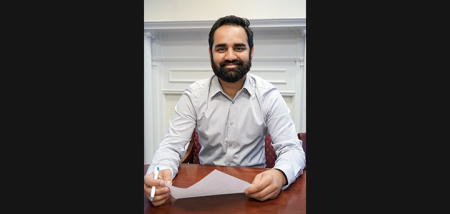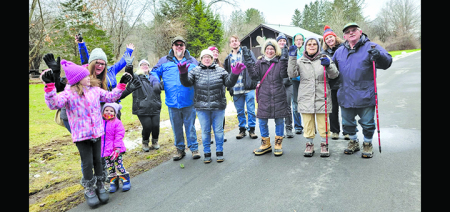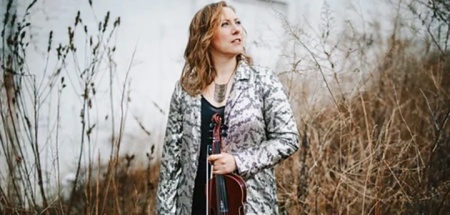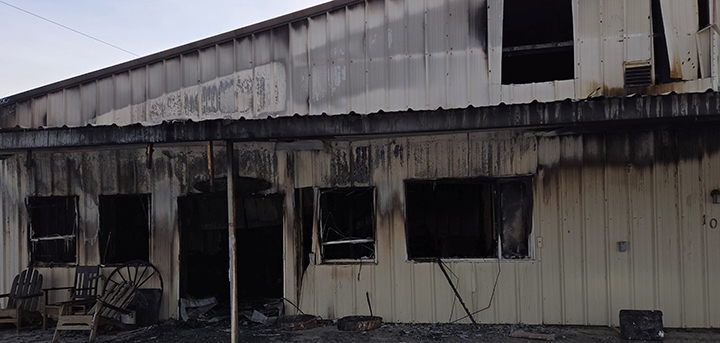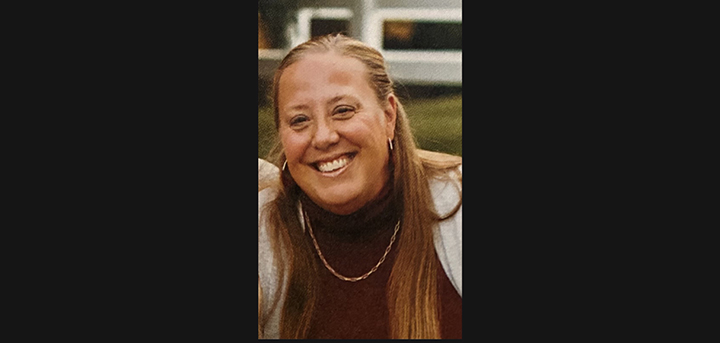Norwich Grapples With How To Deal With Exploding Homelessness Crisis
Published:
October 21st, 2022
By:
Tyler Murphy
NORWICH – Homelessness is getting worse. In a single year the number of people needing cold weather housing locally has doubled. What should small towns do about it?
Municipal and social service officials discussed the issue of homelessness Tuesday night as they prepared to rent hotel rooms and create a warming and sleep station for those in need in the City of Norwich for the cold months ahead.
During cold weather months, October to March, New York State requires counties to place any homeless person seeking accommodation in shelter, known as a “Code Blue.”
Since the law was enacted in 2016, Chenango County, like the rest of upstate NY, has seen an exponential increase in the number of people using the program.
Chenango County has seen the number double since last year.
This year the county will have to house more than 200 homeless people by official's estimates, they reported just under 100 in 2021.
In 2016, the year the law went into effect, Chenango County had only eight.
Since Chenango County has no homeless shelter, it must rent a few dozen hotel rooms instead.
“It could be 20, 30, at times almost every hotel room space in the county that is willing to work with the department can be occupied,” Chenango County Department of Social Service Commissioner Dan Auwarter explained at the meeting.
If the weather change is short-term, the county can provide an overnight respite at a warming shelter run by Catholic Charities as an alternative. It can aid about 10 people.
The housing must be provided when the temperature dips below freezing despite any lack of cooperation with certain rules that might normally disqualify a candidate for social programs, like drug use.
If Chenango County cannot find local accommodations, DSS must seek it elsewhere even if it means paying for a hotel room in another county – which is a worse case scenario that other upstate counties are getting ready for.
COVID, substance abuse, the economy and record breaking immigration are a few of the contributing factors to rising homelessness being debated on the national stage.
New York's efforts to enact sweeping changes on the justice system also complicated things such as decriminalizing drug use, changing mental health law, and enacting bail reforms.
State mandates aggravate the issue in rural areas by compelling smaller communities to follow rules that were primarily designed to address the homeless issues in New York City and higher populated urban areas. In rural areas, like Chenango County, they outstrip local resources and cause issues of their own.
The greater issue seems larger than communities can solve, so the general strategy has been to cope with increasing affects, mainly with DSS and non-government organizations urging local governments to offer increasing accommodation and amenities. Catholic Charities is in the process of setting up a housing program that will feature a series of permanent miniature houses to aid with the issue, just outside of city limits.
Some are pushing for more, and county officials have discussed creation of a homeless shelter, but no plans have been presented and no decisions made.
Others have warned that creating a permanent social infrastructure will only help to entrench a number of issues deeper into the local community, such as drug use, crime and poverty.
Most agreed however that the trends indicate things will get worse before they get better.
Sharing first hand knowledge
Norwich Mayor Brian Doliver welcomed comments on homelessness, saying it had become a major issue over the last 4 or 5 years, and he wanted to hear from local residents and officials who were seeing it first hand.
Auwarter explained one of the major reasons more homeless are visible this time of year is because of Code Blue regulations, which was an executive order passed by the governor in 2016- 2017 that became codified in social law.
“What we've seen since 2016 is a dramatic increase in the amount of people that are being placed and are adept to the legislation,” said Auwarter. “We are seeing exponential growth every year since that law was passed and it is virtually out pacing our ability to place people in our shelter resource that we have in Chenengo County.”
“State law mandates we place people out of inclement weather. As I've said many counties have shelters in urban settings, like in the city, or maybe in a town, places like that. Chenango County does not have a formal homeless shelter or a formal homeless program.”
“The law was intended for urban centers, the law was written specifically in New York City,” said Auwarter. “It was born of the idea that unsheltered people in the city weren't being allowed to access expanded capacity shelters in that set up.”
“The reason the law came into being was to mandate urban settings like New York City, to allow those folks to come out of the sewer, subway and alleyways, and places like that, and come inside and the problem is when New York City passes legislation it ends up affecting the entire state proper and as an unintended consequence it does take resources and processes that are not the same as down state settings.”
“Hotels are a method of compliance, that in my mind, are not appropriate to this particular need.”
“Hotels provide a potential amount of privacy, obviously they are intended for the public to use as a business resource and never intended to be a social services program. However, in lieu of any other resource upstate has rely on these more and more.”
“Delaware, Otsego, Madison, Schoharie, I talked to them this morning. Several of them are also in the process of operating or building warming stations to adjust to this growing need.”
Auwarter confirmed data showed homelessness was increasing in New York State and nationally.
“It's driven by a lot of factors. Some is economic, some of it is housing resources, some of it is substance abuse and mental illness, some of it is the reduction of human services over decades,” said Auwarter.
“One of the issues we are finding in Chenango County is that we're grossly out pacing our ability to place people in hotels. Last year we hit maximum very quickly and this year we are on pace to fill that very quickly as well.”
“It's going to be a serious concern for my department, because if we have to place individuals we have to seek shelter where we can.”
“Other counties are experiencing the same situation where they are seeking shelter, which is a very complicated and quite frankly expensive endeavor, to be obvious we don't want to be in that situation, but without any other resource that is one of your final options as well,” he said.
Helping or hurting the community?
Republican Assemblyman and former Norwich Police Chief Joseph Angelino recalled his time with the department in the 1990's when about 3,000 jobs left the area in and around Norwich. Angelino said the same thing was happening today.
“Everything I do is skewed by numbers or by bias toward New York City.” Angelino said rules like, “transport to nearest shelter” requirements were another example of a law hurting upstate New York because communities must spend money to meet the standards designed for New York City.
“The homelessness issue in New York City is mind boggling,” he said.
The biggest assets we have in Norwich NBT, Tops and the hotel, if we lose one of those it collapses,” said Angelino.
“A lot of the people living here homeless- in my 62 years of experience, are homeless by lifestyle. They could stay some place but the've been thrown out of their house. They could stay with a relative or a friend, except they don't allow drugs there. They could stay some place but I have kids and you are a sex offender, so a lot of this stuff is homelessness by situation,” said Angelino.
“Remember the jobs, if we had employment for people, people would own a house, rent an apartment, they would have some ownership and skin in the game,” he said.
He said a million people had moved out of upstate NY due to bad policy.
“Everyone in here has a friend or relative who has left New York State,” he said.
Angelino was given and offered advice,“ And I wanted to warn every body here, if you start subsidizing poverty and homelessness, you will only grow it. So what we should be doing is long range planning, because there is no short-term fix magic for this, except keep people from freezing to death this January.”
Angelino said he was concerned the situation in upstate New York might get so desperate the state was considering new programs that would use vacant homes to subsidize the homeless problem. He urged local city leaders to do everything they could to remove or repair vacant homes in the area.
Neighbors' hope and concern
Local residents expressed concern and hope at the meeting.
One man asked how much each homeless person costs the local taxpayer.
Auwarter said it depended on each case. He said as an example with an ideal family with children that remained compliant with guidelines: the county received 100 percent reimbursement from federal funds.
Funds for single or childless couples differ. He estimated about 71 cents per every dollar spent was a local share cost from the county.
“It is a very expensive endeavor,” Auwarter said. He said the cost associated with cold weather requirements for housing was paid for by state tax money.
Another resident, a man who said he was a former volunteer at a Syracuse homeless shelter said, “They had a rule if you wanted to get a warm bed tonight you had to be alcohol and drug free.”
Auwarter said the weather requirements for housing placement, Code Blue, covered safety issues but did not require abstinence of substances.
“The law was passed without consideration of the resources to counties it was going to effect,” he said.
Another resident said he lived down the street from the proposed warming shelter.
“Thank you for getting people together to talk about this, there has been a lot of misunderstanding.”
He said he spoke with neighbors and previously met with officials about concerns.
"Me, personally, I think as long as it is controlled and monitored and if the outcome enables our neighborhood, then in my opinion it is a great use of the building.”
"Security was and is, top of discussion. I have a business at home. So I am concerned too,” he said. He said the Norwich police and code enforcement reached out to him.
“If we can do this and we can all support it, why can't we give this a try. Our concern is people walking up and down our street. We have homes and kids,” he said.
The city's homeless warming center
Catholic Charities Executive Director Robin Cotter said despite supporting the warming center, and contrary to local gossip, Catholic Charities was not in the business of homeless shelters.
“We believe in supports, something that is supervised, and helping people move up and out. Giving them that hand up,” she said.
Catholic Charities would run the warming center at 34 Barry Street, which was the former Roots & Wings location.
“So basically the warming center is, as Dan alluded to, is tied to Code Blue, so it'll be in operation between November and March and we would keep it operational even if it was below 32 degrees, we would have to staff it, if we staff it we have to staff it for the entire time,” Cotter said.
“Before they came in they were asked to empty their pockets to make sure they are not bringing in any kind of drugs or anything that wouldn't be allowed in the facility. Their possessions would be locked in a separate area at Roots and Wings so they could not access those things, and basically it's just a warm place to sleep. It's a cot with a shower curtain in between that, something very plain just for them to get out of the elements, and they would have to leave by 9 o'clock in the morning,” she said.
“We are hoping we can take those individuals and connect them to services, that we currently operate or that any other community agency in the county, to help these people get out of the situation they are in.”
Catholic Charities also spoke to the The Norwich Police Department and asked for additional patrols in the area.
“We don't anticipate a lot of problems. We've looked at other programs, we visited other programs, there is very strict polices and procedures surrounding this program,”Cotter said.
“We would only at the most be looking at 10 people.”
Author: Tyler Murphy - More From This Author
Comments
